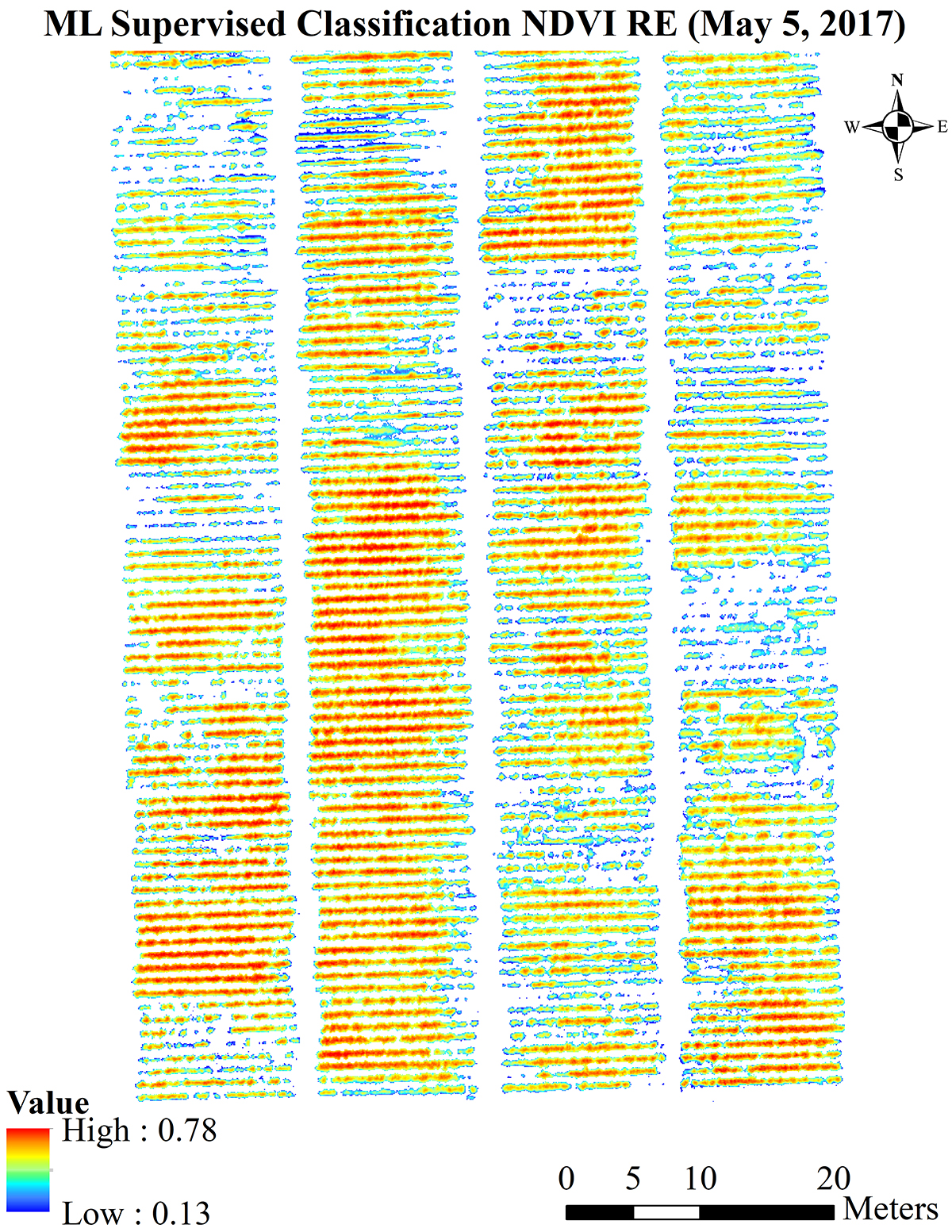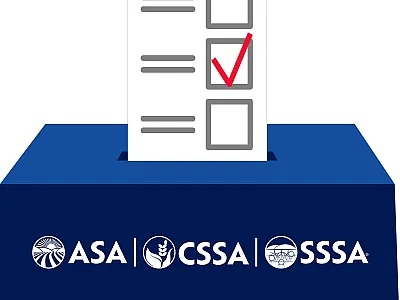Detecting iron deficiency chlorosis in grain sorghum with UAS

Unmanned aircraft systems (UAS) are commonly used in precision agriculture to identify crop stress. Vegetation indices (VIs), derived from image band calculations using multispectral data, serve as tools to quantify plant health. Although VIs have been employed to assess various crop stressors, their effectiveness in detecting iron deficiency chlorosis (IDC) has not been fully explored. Iron deficiency chlorosis is a nutritional deficiency that hinders chlorophyll production, slowing plant growth and reducing yield.
A new study in Agrosystems, Geosciences & Environment aimed to identify and monitor IDC in a small-plot sorghum field using a UAS equipped with a four-band multispectral imaging sensor. Researchers collected weekly flight data over the sorghum growing season and identified segments of healthy vegetation and varying levels of IDC as “healthy,” “mild,” “moderate,” or “severe.” After removing soil background from the imagery, the team calculated 25 VIs using image bands with and without soil influence. They then assessed each VI's ability to distinguish between healthy vegetation and IDC to identify the most effective index.
The results highlighted a VI for overall detection and another particularly suited for early-season identification. These findings can help identify areas of IDC early in the growing season and facilitate localized treatment, saving both time and money while maximizing crop yield.
Dig deeper
Adapted from Garcia-Williams, I. A., Starek, M. J., Brewer, M. J., & Berryhill, J. (2024). UAS-based multispectral imaging for detecting iron chlorosis in grain sorghum. Agrosystems, Geosciences & Environment, 7, e20540. https://doi.org/10.1002/agg2.20540
Text © . The authors. CC BY-NC-ND 4.0. Except where otherwise noted, images are subject to copyright. Any reuse without express permission from the copyright owner is prohibited.







